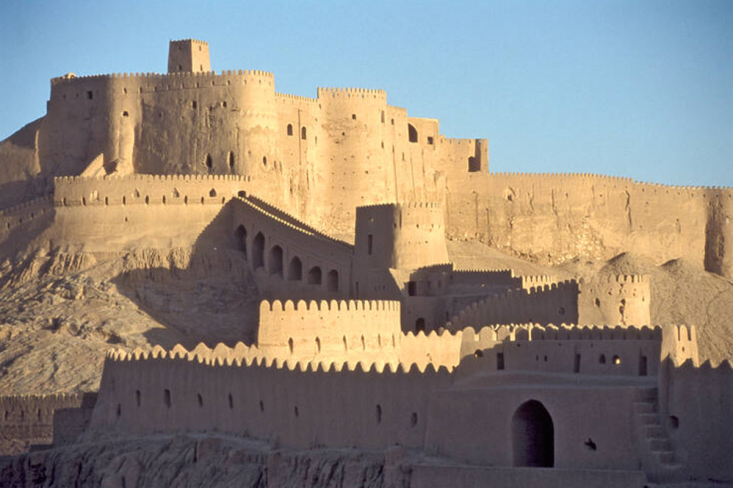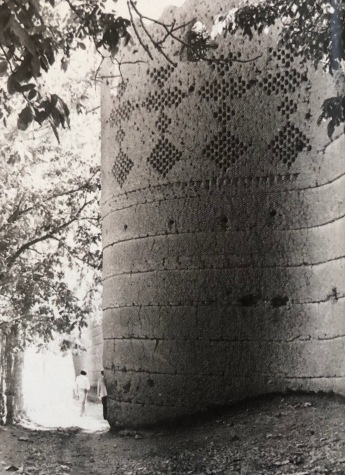Posted by Nimira Dewji
The forty-sixth Nizari Ismaili Imam Hasan Ali Shah, also known as Muhammad Hasan al-Husayni, was born in Kahak, Persia in 1804 and succeeded to the Imamat in 1817 after the murder of his father in Yazd. His father Imam Shah Khalil had transferred the seat of the Imamat from Kirman to Kahak, a village near Qumm and Mahallat where the Ismaili Imams possessed extensive properties. In 1815, he moved their residence to Yazd to be closer to the Khojas who continued to embark on the dangerous journey to see the Imam in Persia (Daftary, The Ismaili Imams p 196). There, Imam Khalil Allah became a victim of certain intrigues of the local Twelver Shi’i clerics and lost his life in the course of a dispute between some of his followers and the local shopkeepers” (Daftary, Foreword, The First Aga Khan p xxii).
Imam Hasan Ali Shah’s mother, Bibi Sarkara (d. 1851), went to the Qajar court in Tehran to seek justice. Although the perpetrators were never caught, the Qajar monarch Fath Ali Shah (r.179701834), punished the instigator of the disturbance. Fath Ali Shah added to the Imam’s landholdings in Mahallat, appointed Imam to the governorship of Qum, and bestowed upon him the honorific title of Agha Khan (Aga Khan), a hereditary title continuing to the present Imam. Mawlana Hasan Ali Shah married the monarch’s daughter Sarv-i Jahan Khanum. Henceforth, Imam Hasan Ali Shah became generally known as Agha Khan Mahallati because of his royal title and his family’s deep roots in the Mahallat region in central Persia.

Official portrait of Imam Hasan Ali Shah taken after 1847. Source: The Ismailis An Illustrated History
Imam Hasan Ali Shah led a tranquil life until the death of Fath Ali Shah in 1834. In 1835, Fath Ali Shah’s grandson and successor Muhammad Qajar (r. 1834-1848) appointed Imam as governor of the province of Kirman, a position previously held by Imam’s grandfather Abu’l-Hasan Ali (d. 1792). At the time there was much civil unrest in the region, which Imam Hasan Ali Shah successfully settled, restoring order with assistance from the local tribesmen who were among his followers. However in 1837, Mawlana Hasan Ali Shah was dismissed from his governorship, but refused to acknowledge his dismissal. Imam “withdrew with some of his forces to the citadel of the ancient city of Bam, in the province of Kirman, where he was besieged for fourteen months by government forces dispatched against him” (Daftary, The Ismaili Imams p 203).

Citadel of Bam in central Iran, a UNESCO World Heritage Site. Image: UNESCO
Imam eventually was permitted to return to Mahallat, where he constructed a fortified residential compound for his family and numerous dependents.

A surviving wall of Imam Hasan ALi Shah’s residence compound at Mahallat. Image: The Ismailis An Illustrated History
In his autobiography Ibrat-afza, Imam details the events in Persia and his eventual settlement in India. Owing to various political confrontations, Imam was forced to leave Persia for Qandahar, Afghanistan, thereby ending the Persian period of Nizari Ismaili history after seven centuries since Alamut time. Imam subsequently travelled to various cities in the Indian subcontinent: Sind, Jerruck, Calcutta, Karachi.
/nimirasblog.files.wordpress.com/2021/10/ibrat-afsa.png?w=201[/img]
Image: The Institute of Ismaili Studies
On 9 October 1844, Mawlana Hasan Ali Shah travelled from Karachi to ports in western India, which he describes in his autobiography:
“I set out by sea from Karachi to visit the jama’at of my murids living in Cutch and Bhuj. It was the first time I had ever boarded a ship and the sea was stormy, but we arrived safely at Madda’i [likely present day port of Mandvi in Gujarat]. The ruler of the land was Maharaj Rao Desalji [r.1819-1860], who was quite wise, chivalrous and mature despite his young age. He came to the port of Madda’i and we had a meeting. Meanwhile, he asked that I go to Bhuj, which was his capital. I accepted the invitation and after visiting the jama’ats in the towns along the way, I changed course towards Bhuj. All arrangements were made to extend every courtesy to me on behalf of the maharaj, and he allocated stately place as a lodging and everything else. I stayed in Bhuj for a month attending to the affairs of the jama’at… Then I moved towards Anjar [a city in the Cutch district of Gujarat]. After I finished attending to the business of the jama’at of that region, I departed for Halar and Kathiawar…” [both in Gujarat in western India]” (The First Aga Khan p 120-121, n161, n163, n164).
After travelling to various towns, Mawlana Hasan Ali Shah settled permanently in Bombay (present-day Mumbai) in British India in 1848, initiating the modern period in Nizari Ismaili history.
While many Khoja Ismailis in the subcontinent acknowledged Imam Hasan Ali Shah as their spiritual leader, several others challenged the authority he claimed, taking their grievances to court. During the eighteenth and nineteenth and nineteenth centuries, there were several communities in the subcontinent who had developed in isolation from the Imamate due to the need for the Imams to practice concealment (taqiyya) for centuries, in order to escape persecution. A number of communities in the subcontinent traced their allegiance to Nizari Ismaili pirs and had developed their own models of governance and forms of leadership. In addition, the British had established direct rule over most of the subcontinent seeking to govern a heterogeneous region by classifying the people based on religion. To clarify the situation for the Khoja Ismailis, Imam Hasan Ali Shah circulated a document in 1861, in Bombay and elsewhere, stating the Khojas were Shi’i Ismailis, and included the beliefs, customs, and practices, and his role as the leader of the community. Those who accepted the terms in the document were asked to sign it. A minority group challenged the terms and filed a lawsuit.
The case, referred to as the Aga Khan Case, was tried by Sir Joseph Arnould in 1866 at the Bombay High Court. The judgement “legally established the status of the community, referred to as ‘Shia Imami Ismailis’ and of the Imam as the murshid or spiritual head of that community and heir in lineal descent to the imams of Alamut” (Daftary, The Isma’ilis Their history and doctrines p 56). The ruling also legally endorsed the Khojas as a single united group of the Raj, whose leader’s role was to govern their affairs and define their religious practices. The ruling was profound, considering that only a few decades earlier, Imams and members of the community were living in concealment.
During the three decades of his residence in the subcontinent, Imam Hasan Ali Shah organised the community through a network of officers called mukhi and kamadia for jamats of a certain size. He also attended the jamatkhana in Bombay on special occasions and led the public prayers of the Khojas. Every Saturday, when in Bombay, he held darbar, giving audience to the jamat. It was during the time of Imam Hasan Ali Shah that the
first Nizari Ismaili jamatkhana was established in Zanzibar in the 1830s, with the appointments of mukhis and kamadias. (The darkhana of Zanzibar was officially opened by Mawlana Sultan Muhammed Shah on August 16, 1905).
Imam Hasan Ali Shah Aga Khan I died in 1881, after an Imamat of sixty-four years, and was buried in a mausoleum at Hasanabad in the Mazagaon area of Bombay. He was succeeded by his eldest son Aqa Ali Shah Aga Khan II.
Aga Khan Hasanabad Bombay Mumbai
Imam Hasan Ali Shah’s mausoleum in Mumbai. Source: Raiba Anjali Dileep, The Unknown Mumbai
Sources:
The First Aga Khan, Memoirs of the 46th Ismaili Imam, Edited and translated by Daniel Beben and Daryoush Mohammad Poor, I.B. Tauris in association with the Institute of Ismaili Studies, London, 2018
Farhad Daftary, The Ismaili Imams A Biographical History, I.B. Tauris in association with the Institute of Ismaili Studies, London, 2020
Farhad Daftary, The Ismailis Their history and doctrines, Cambridge University Press, 1990
Farhad Daftary, Zulfikar Hirji, The Ismailis An Illustrated History, Azimuth Editions in association with the Institute of Ismaili Studies, 2008
/nimirasblog.wordpress.com/2021/10/09/oct-9today-in-history-imam-hasan-ali-shah-set-out-by-sea-to-visit-jamats-in-western-india/